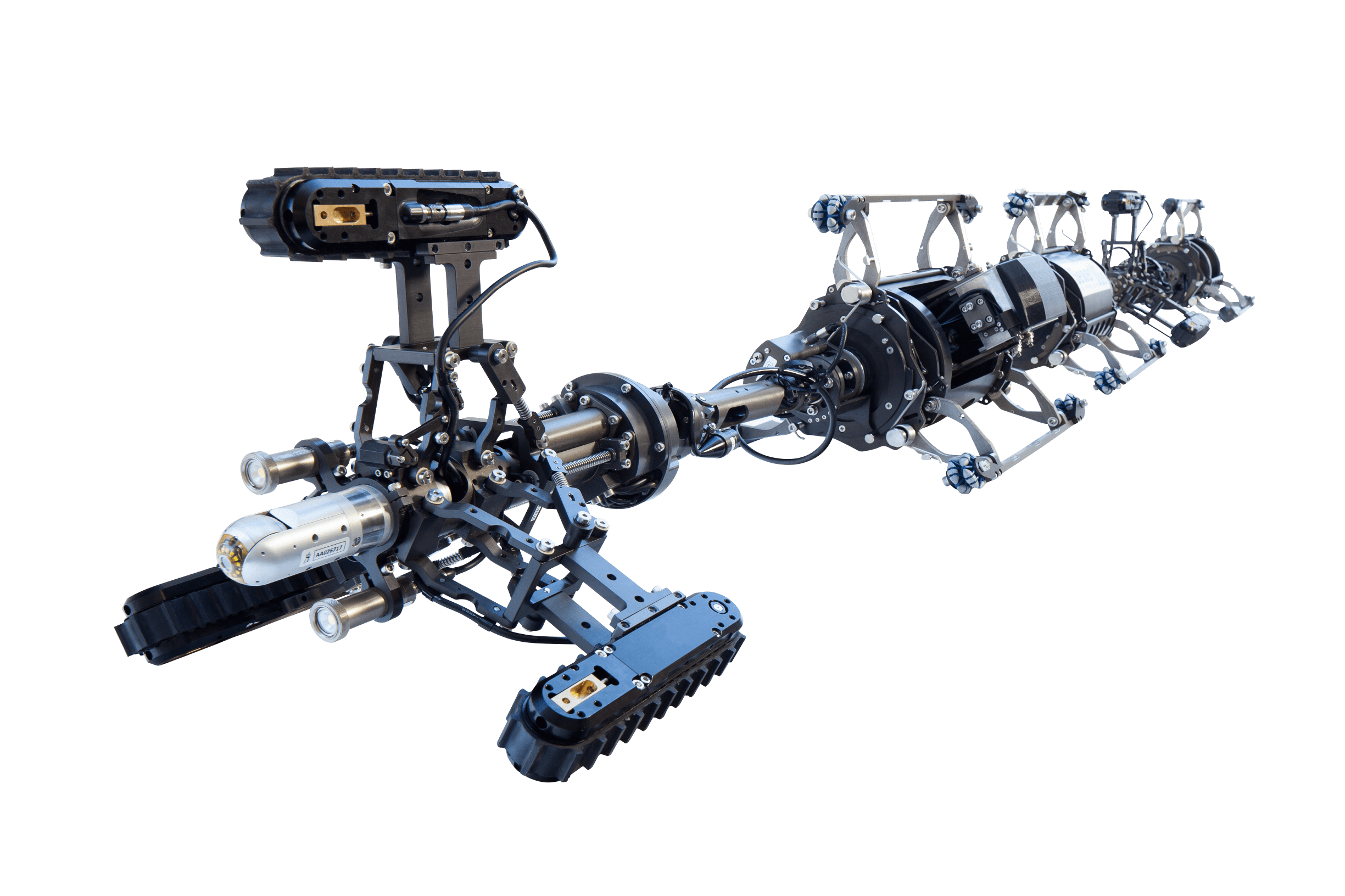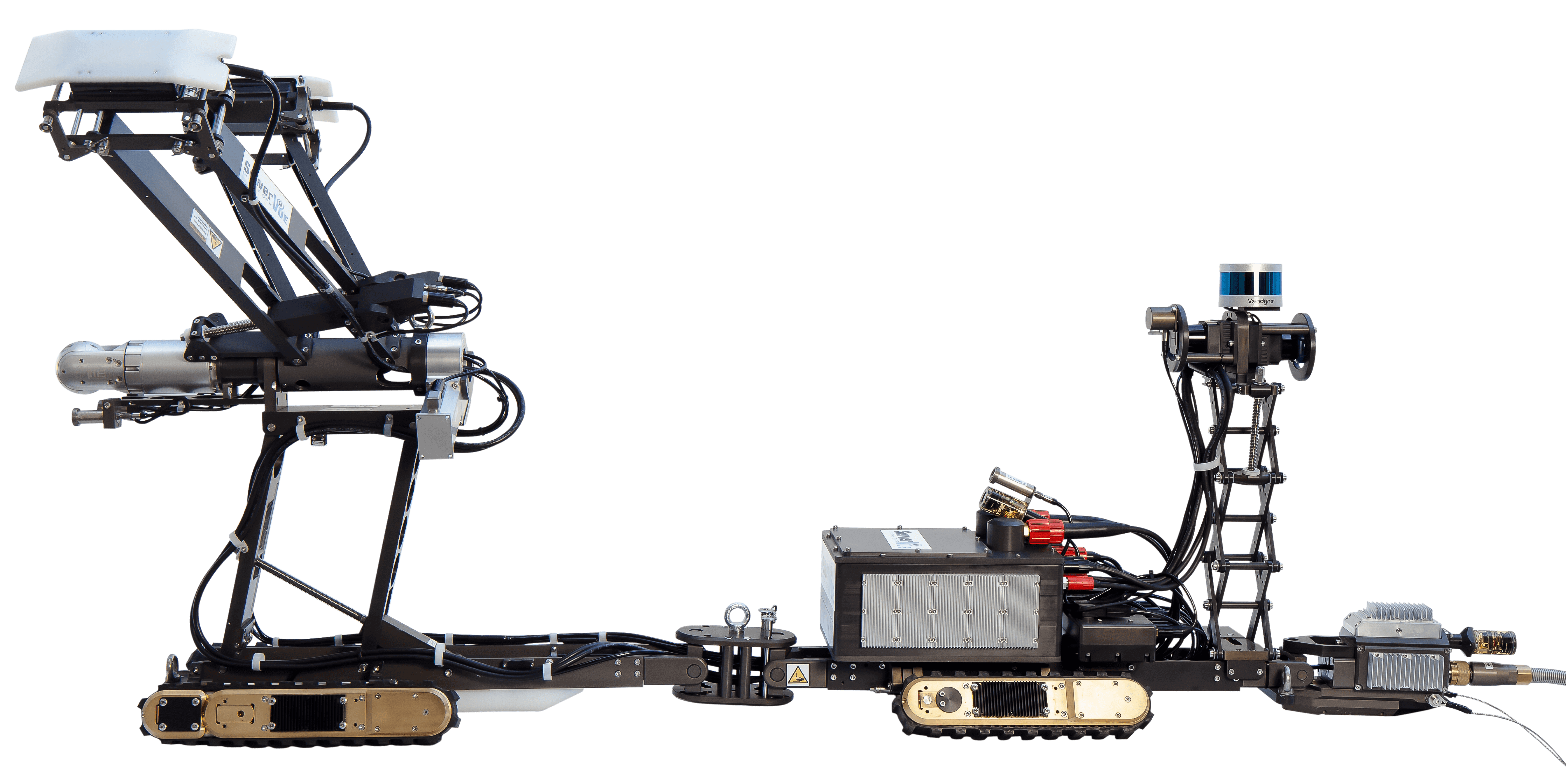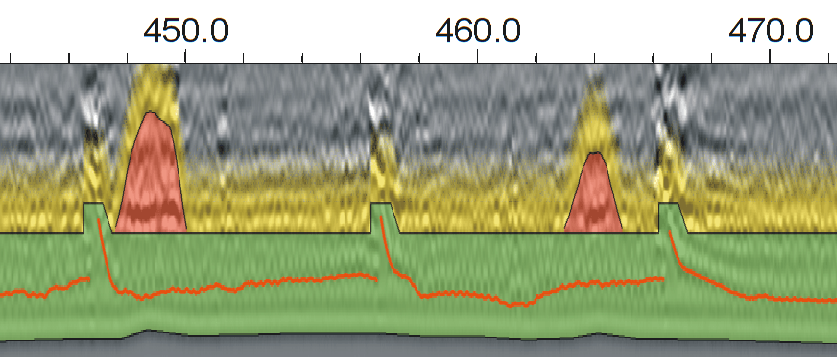Pipe Penetrating Radar
Revolutionary Pipeline Condition Assessment
What is PPR?
Pipe penetrating radar is SewerVUE Technology’s proprietary pipeline condition assessment technology. PPR is the in-pipe application of ground penetrating radar. GPR antennas are taken inside the pipe and used to scan the inner wall. With this method, SewerVUE can gather a wealth of quantitative, accurate information about the condition of the pipe. PPR surveys can see remaining wall thickness, rebar cover, delamination, and even detect the presence of voids developing outside the pipe.
PPR surveys can be conducted with man-entry operations where it is safe to do so, or with remotely-operated vehicles where it is not. SewerVUE uses two different ROVs for PPR surveys: the 4th-generation Surveyor, and the new Asbestos Cement Pipe Scanner.

|

|
How Does it Work?
PPR is a pipeline inspection technology that uses GPR to investigate the subsurface of the Earth by emitting electromagnetic (EM) waves and measuring the reflected signals. PPR is the adaption of this technology for use from inside pipes.

EM waves have two important properties: they travel at different speeds through different materials, and the amplitude of their reflections is greater depending on the contrast between two materials. By measuring the two-way travel time and the amplitude of the reflected EM waves, a detailed image of the subsurface can be built. By repeating this process continuously along a survey line, a profile of the line is created. This can be done at multiple clock positions to provide a detailed report on the pipe’s current condition, as well as the presence or absence of voids outside the pipe wall.
The most commonly deployed ROV, the Surveyor, carries two PPR antennae. These can be adjusted to collect data from any two clock positions between 9 and 3 o’clock. In a typical survey, lines of data are collected from two clock positions as the robot moves in one direction, and two different positions as the robot returns to the deployment point. This results in four lines of PPR data with just one deployment. The PPR antennae on the Surveyor transmit at 1.6 GHz or 2.3 GHz frequencies, which results in signal penetration depth of up to 920 mm.
Combined with LiDAR and CCTV information collected simultaneously, PPR surveys can provide actionable information with a safe, cost-effective method. Contact us to find out how PPR can meet your needs.